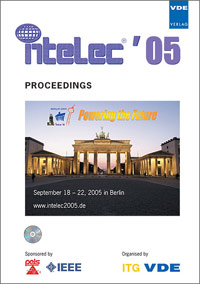Test for valve controlled lead acid batteries, carried out in the battery test laboratories of DeTeImmobilien in Steinfurt Germany
Konferenz: Intelec '05 - Telecommunications Conference - 27th International Telecommunication Energy Conference
18.09.2005 - 22.09.2005 in Berlin, Germany
Tagungsband: Intelec '05 - Telecommunications Conference
Seiten: 8Sprache: EnglischTyp: PDF
Persönliche VDE-Mitglieder erhalten auf diesen Artikel 10% Rabatt
Autoren:
Borek, Leopold (DeTeImmobilien, Darmstadt, Germany)
Eickhoff, Klaus-Peter (DeTeImmobilien, Steinfurt, Germany)
Inhalt:
DeTeImmobilien (former Deutsche Bundespost) has established their own approval procedures for batteries. The regular testing of valve regulated lead acid batteries started in the year 1987. Tests, simulating the special need in the field of telecommunication power supply, have been invented. E.g. there are rectifiers in the field with and without boost charge characteristics. Therefore tests have been adjusted to the more severe operation modes. Test results of 15 types of batteries from different manufactures worldwide stressed with series of 50 discharge and recharge, applying floating voltage only, will be presented in detail. The test will be carried out at approximately 20deg C and the voltage will be adjusted to the statement of the respective manufacturer of the battery. The range of test results series covers the whole spectrum between virtually no loss of capacity and reaching the end of useful lifetime first, rather the end of this test. This demonstrates that carefully selected batteries, even when operated with non ideal charging equipment, are able to lead to satisfactory results. Other tests include the discharging and charging behaviour at low temperatures at 10deg C and 0deg C and self-discharge tests after open circuit storing over 90 days without any charging. In a different test arrangement we measure the respond to multiple deep discharge down to 1 V/Cell. These tests give an overview how the attitude of different batteries may vary under condition sometimes harder than the conditions intended to be faced in regular use. A wide range of fitness for use was recognized under these specific conditions.


